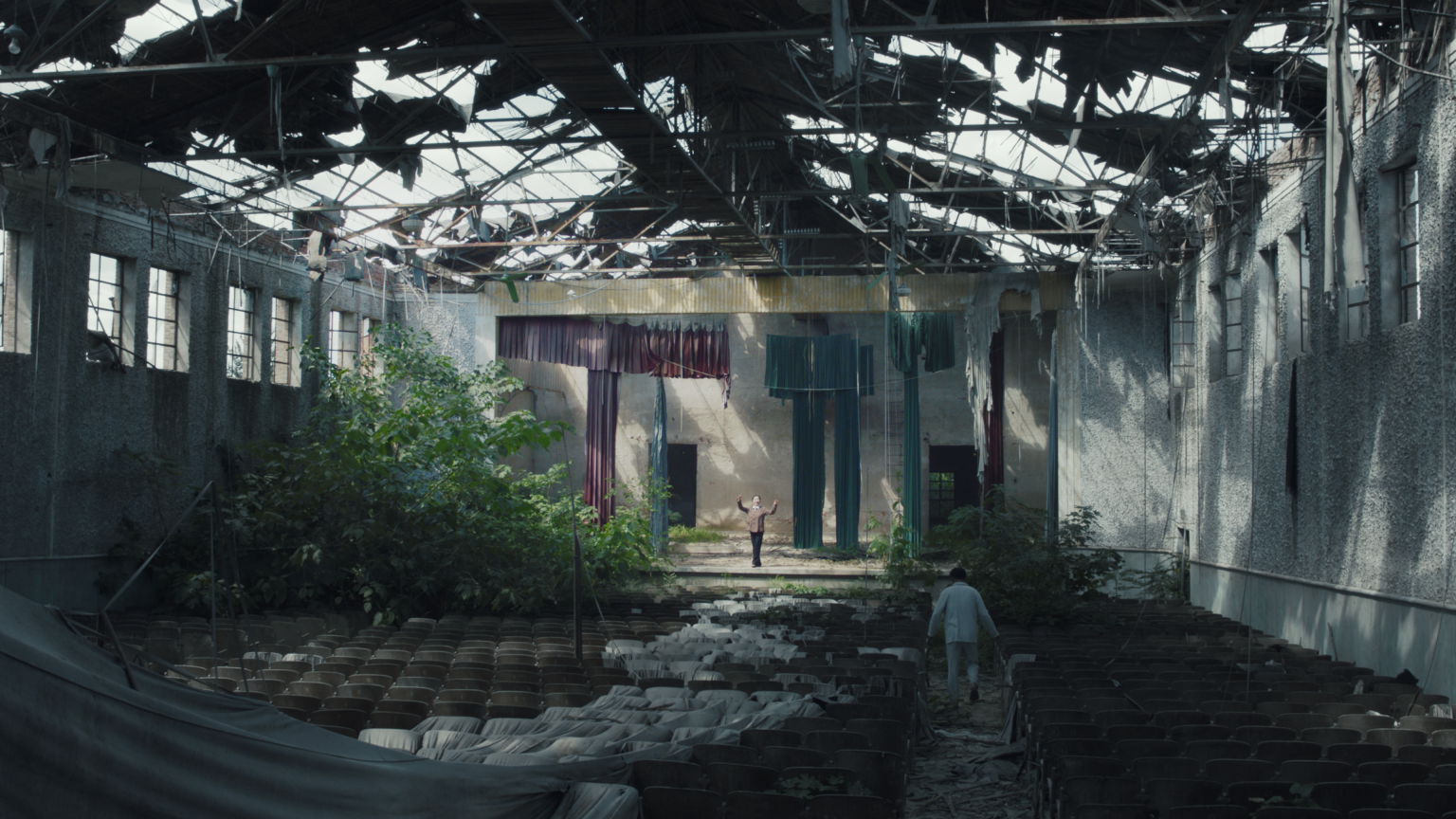Symptomatic Silence of Complicit Forgetting共謀失憶症
Commissioned by Guangdong Times Museum for the exhibition “Forget Sorrow Grass”: An Archaeology of Feminine Time in 2019, curated by Wu Jianru and Sirui Zhang.
A writer with a writer’s block and a woman secretly in distraught, try to heal the wounds in their memories unbeknown to others in their respective worlds despite living in the same room. This contemporary Chinese family, both real and fictional, is engulfed under an alienating atmosphere inhabited by both men and ghosts. In another scenario, a young red guard mistakenly enters a room piled with abandoned books and manuscripts, captivated from reading an ancient story, he suddenly hears the marching sounds outside the window and steps out of the door. This traumatic memory from a half-century ago has again come undone. A blueprint unique to Chinese stories, as distant and personal as it may seem, remains prevalent in those undetected phantom suffering and discretely hidden in the Chinese realities.
The German scholar Aleida Assmann proposed the notion of Complicit Forgetting in Forms of Forgetting. According to whom, when the system attempts to destroy part of a memory from the past, its victims would often exhibit silence symptomatically. Their compounded silence becomes a kind of complicity. As the writer could not heal the wound in his memory through writing, those who share historical trauma would also fall into the unconscious collective silence, that eventually becomes ineffable. It festers over time, and metastasizes in emotional relationships. In the temporal and spatial dimensions where memories and reality overlap, the silence of traumatic experiences wanes from unwritten, unable to be written, and eventually becomes untraceable. Like the subtle relationship where man and ghost cohabit: the struggle between personal and historical trauma eventually becomes powerless, and their reconciliation becomes impossible.
由廣東時代美術館 2019 年展覽“忘憂草:考古女性時間”委託創作,該展覽由吳建儒、張思銳策劃。
一位陷入寫作困境的作家,一位暗自神傷的妻子,他們雖同處一室,卻彷彿在各自的世界中嘗試撫平某些不為人知的記憶傷痕。在這個既寫實又虛幻的當代中國家庭裡,籠罩著人鬼共棲的詭異氛圍。另一個時空裡,一個年輕的紅衛兵誤入一間堆滿廢棄書稿的房間,沉浸在一則古代故事的閱讀中,忽然聽到窗外的遊街聲,奪門而出。一段半個世紀前的創傷記憶被抽絲剝繭。這是一個屬於中國的故事樣板,遙遠而切身,時至今日仍然留有難以覺察的幻痛,平靜地藏匿在中國的現實裡。
德國文化學者Aleida Assmann在《 遺忘的形式》(Forms of Forgetting)中曾提出過一種共謀性遺忘,即當體制試圖銷毀某段過往記憶的同時,其中的受害者也往往表現出創傷性的沉默。兩者的沉默疊加而形成了一種共謀。正如作家無法通過寫作去療愈記憶深處的傷痕,共同分享歷史創傷的人也同樣陷入無意識的集體性沉默,這種沉默最終變成一種無法言說的、在時間中累積、在情感關係中轉移的病徵。在這個記憶與現實交錯的時空中,這種有關創傷經驗的沉默從不被書寫到無法書寫,最終難以追溯。就像影片中人鬼共棲的微妙關係:個人與歷史傷痕之間的對抗最終變得無力, 和解變得不可能。
All copyright reserved by the artist. 作品版權歸藝術家所有。
For enquires, please contact [email protected]
